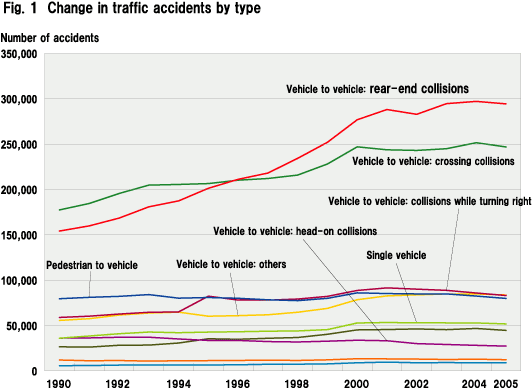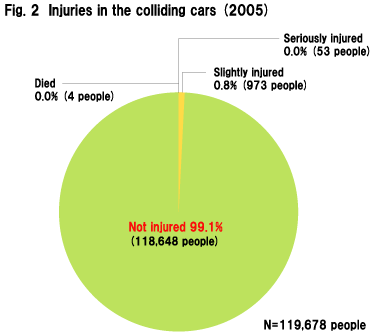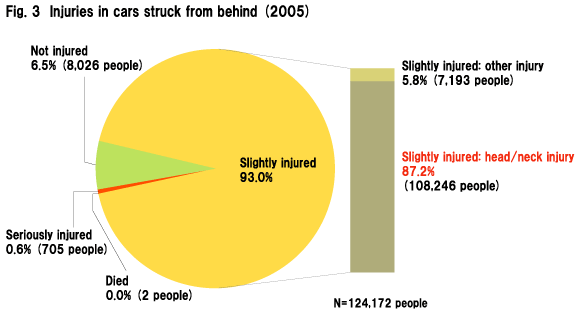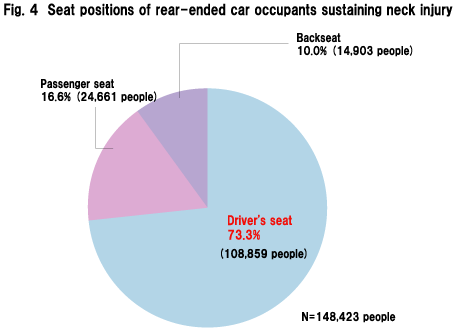
|
1) Change in the number of accidents
Figure 1 shows the change in the number of accidents over the years by type of accidents. There has been a notable increase in rear-end collisions, which have accounted for the largest proportion every year since 1996.
In 2005, there were 294,431 rear-end crashes, representing 32% of all traffic accidents: i.e. one in every three accidents on the road.
Rear-end crashes also account for the largest proportion of traffic accident deaths: 35% (410,243) of all such fatalities. Rear-end crashes thus occur frequently.
|
|
|
|

|
|
|
2) Injuries caused by rear-end crashes
Of all rear-end crash accidents between four-wheeled vehicles, approximately 60% occur between ordinary passenger cars. This is not surprising, as most of the vehicles on the road are passenger cars.
Here at the Institute for Traffic Accident Research and Data Analysis (ITARDA), we examined injuries sustained by occupants of passenger cars in rear-end accidents.
In this report, we look at accidents that are appropriate for analysis, taking into consideration the types of vehicles involved and the parts collided, among rear-end accidents that involved passenger cars in 2005.
The degree of injuries were compared between those injured in the cars that bumped into the vehicle in front, and those injured in the rear-ended cars, as shown in Figures 2 and 3. While occupants of cars that collided from behind were largely unharmed (Fig. 2), 87% of those bumped from the rear were slightly injured, mainly in the neck (Fig. 3).
It is therefore important to devise measures to protect occupants of vehicles struck from behind from neck injuries.
|
|
|
|

|
|
|
|

|
|
Figure 4 indicates which seat the injured drivers/passengers were sitting in when their vehicle was struck from the rear and they suffered a cervical injury. The driverfs seat accounted for as much as 73%, probably because many people drive alone without passengers.
|
|
|
|

|
|
|
Next
|
